
Given the following order policies:
Referring to the graphic, what are the sizes of the three planned orders A, B, and C?
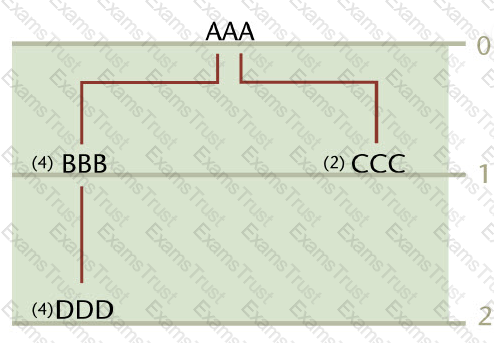
The Bill of Material structure is shown in the graphic. The quantity per for each component is shown in parentheses. Independent demand for 100 units of item AAA has been received. There are no ScheduledReceipt or OnHand records for any of the items; PartSource.OrderPolicy.OrderGenerationRule = Anytime.
What is the correct PegPart, DriverPart, and NeedQuantity found in the WhereConsumed table for item DDD?
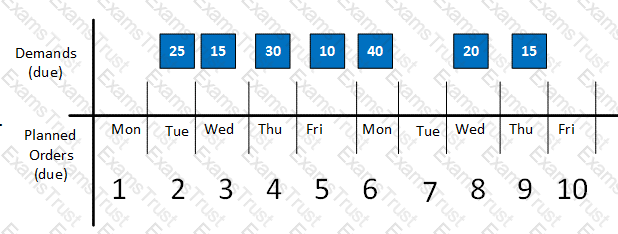
Given this information and referring to the graphic:
Which statement about the planned order(s) that are created is true?
You have a hierarchy called PartFamily that is based on the PartCustomer table. There is a second hierarchy in use, also based on the PartCustomer table called PartPlanner. When the PartFamily hierarchy is used, performance is noticeably worse than when the PartPlanner hierarchy is used.
In this situation, which design issue would contribute most to poor performance?
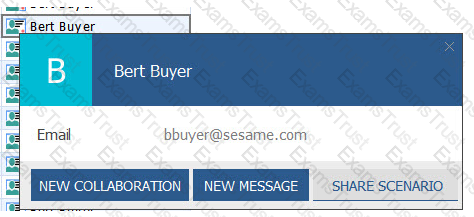
You want to identify the buyer responsible for the component part in a worksheet based on the BillofMaterial table. Additionally, you want to have the option of inviting that buyer to a collaboration, messaging that buyer, and sharing a scenario with them.
Which set of column expressions and configuration changes will enable this capability?
You are developing a worksheet that will be used to run a script through a form. For the script to work properly, you will need to pass information from two columns as script arguments.
Which two actions will accomplish this task? (Choose two.)
Choose 2 answers
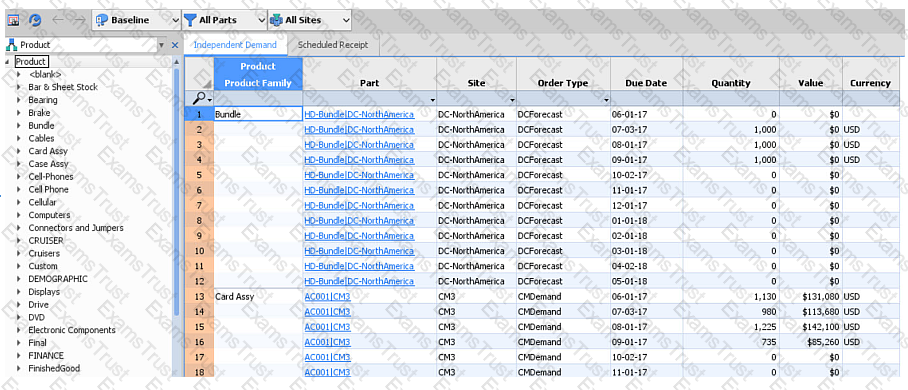
You want to enable data caching on the worksheet shown in the graphic.
Which two actions will accomplish this task? (Choose two.)
Choose 2 answers
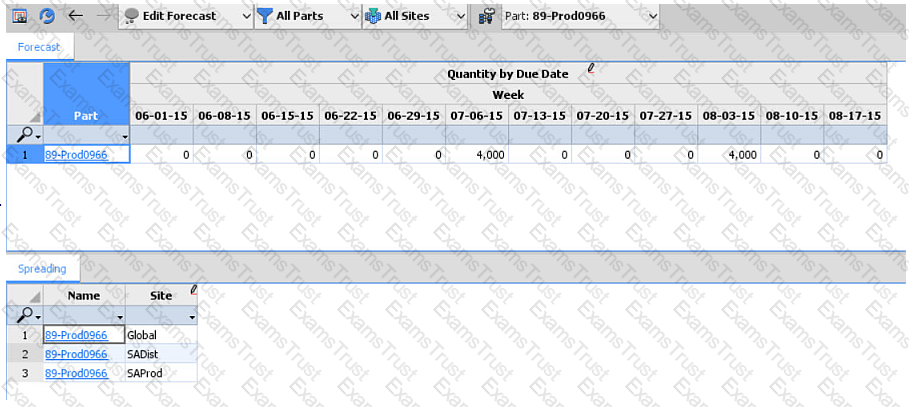
You want to enter a forecast for 6000 units of part 89-Prod0966 in the June 8 bucket. You expect that three records will be inserted into the IndependentDemand table (equal quantities of 2000 at each of the three sites); however, you get an error.
Which action would solve the error?
After the most recent planning cycle, a planner asks you why there were no new records in the HistoricalPartKPI table. They expected these records to be written as part of a scheduled automation chain. You must determine if the automation chain has been disabled, but you are not familiar with which automation chain should perform this action. As the first step in identifying the automation chain, you need to search for any of its associated resources.
In this situation, which process would guarantee that you have the correct associated resources of the automation chain?
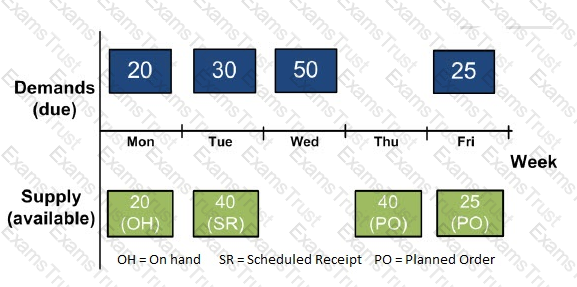
A part has several demands due in a particular week. All demands are the same priority. Available supplies are shown in the graphic. The control table settings for the OrderPriority.AllocationRule is FairShare and PlanningCalendars.AllocationCalendar is Week.
How much of the supply quantity on Thursday will be allocated to the Wednesday demand?
Customers sign in to view only their independent demands. The customer's User IDs are in a user group with the name of the customer to which they correspond. You want to create a single worksheet that allows customers to only view their independent demands within RapidResponse.
How would you accomplish this task?
You want to control how available dates are calculated for your vendor managed parts' supplies and demands.
In this situation, which control table would you need to configure?
You are creating an insert definition to insert records using a crosstab worksheet, which contains weekly buckets that begin on Monday. You want the inserted records to be due on Friday of that week but if Friday is a non-workday, you want the inserted record to be due on Thursday.
In this situation, how would you set the bucket date in the insert definition?
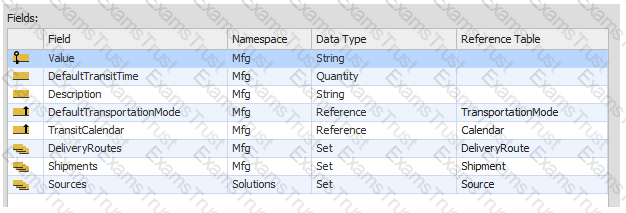
The graphic shows the Carrier table view in the data model dialog.
Which three statements about this table are true? (Choose three.)
Choose 3 answers
You are asked to transform PlannedOrder data into new ScheduledReceipt records, assuming just one PartSource per part and no maximum quantity. You need to filter the PlannedOrder records to ensure you do not try to create any ScheduledReceipt records which already exist. The workbook includes a worksheet, LKPScheduledReceipt, on existing converted ScheduledReceipts and follows Kinaxis best practices.
In this situation, which filter expression will follow KInaixs best practices and provide the best performance to include PlannedOrder records that do not match existing ScheduledReceipt records?
You are creating a resource that is designed to evaluate the impact of converting planned orders to scheduled receipts. After the evaluation is complete, you want to provide users the opportunity to push their changes to the parent scenario. Users will be using their scenarios to consider changes to lead time, constraint available, and other planning parameters. The company policy stipulates that lead times cannot be adjusted in any shared scenarios.
What should you do to accomplish this task?
You need to create a workbook to allow users to manage their demand forecast by product, customer region, and distribution site. You also want to simplify user controls and use hierarchies to allow each user to make several selections in the same hierarchy.
In this situation, which two actions should you take? (Choose two.)
Choose 2 answers
You are asked to restrict a worksheet so that users can only see data for the demand of the countries that they should have permission to see. A field has been added to the IndependentDemand table, which is a reference to a custom table called Country. Each user may have permission to see the demands from one or more countries, and each country can be seen by one or more users. They should be able to see data from multiple countries in the worksheet at the same time.
In this scenario, what should you do to enable this capability?